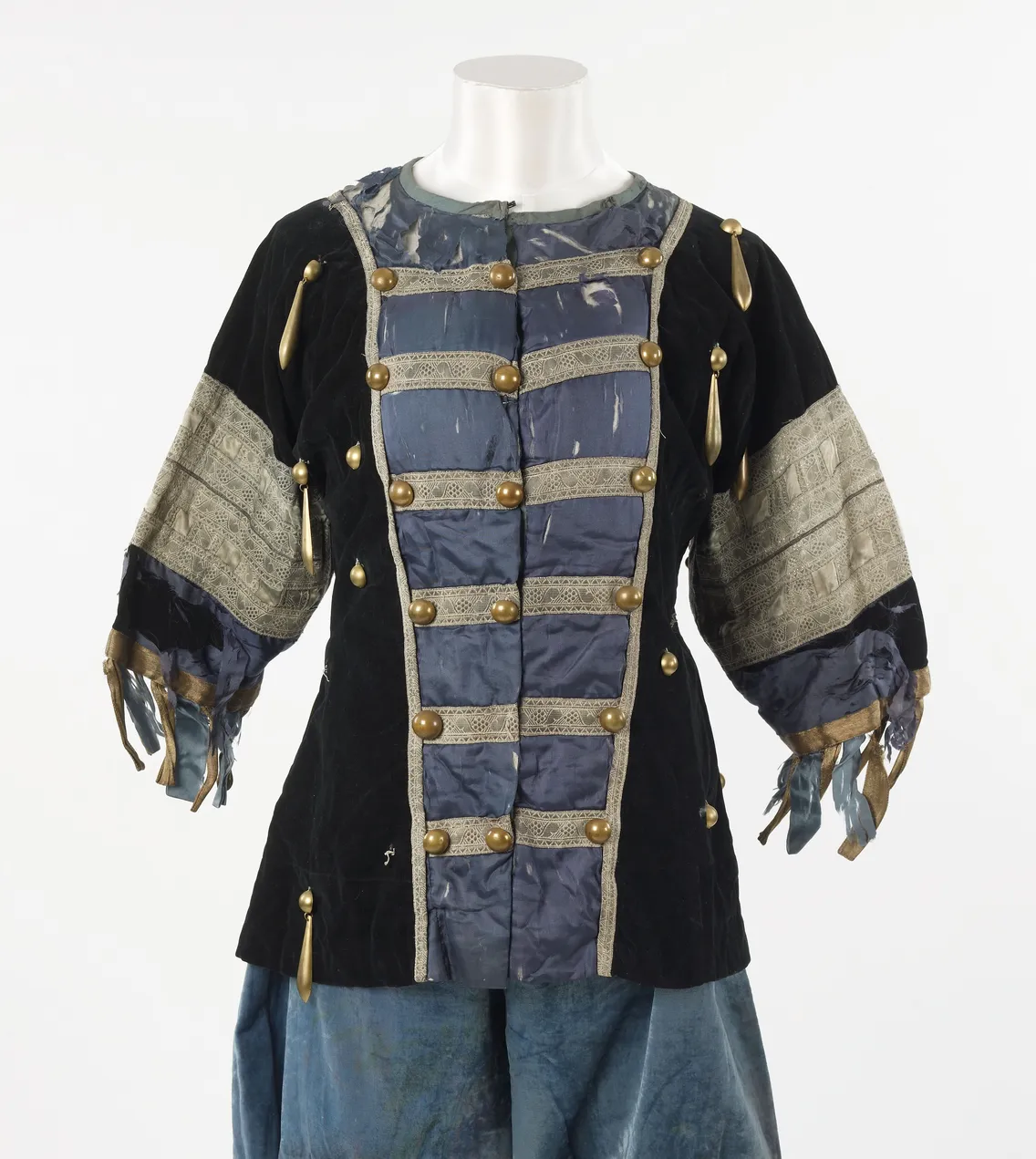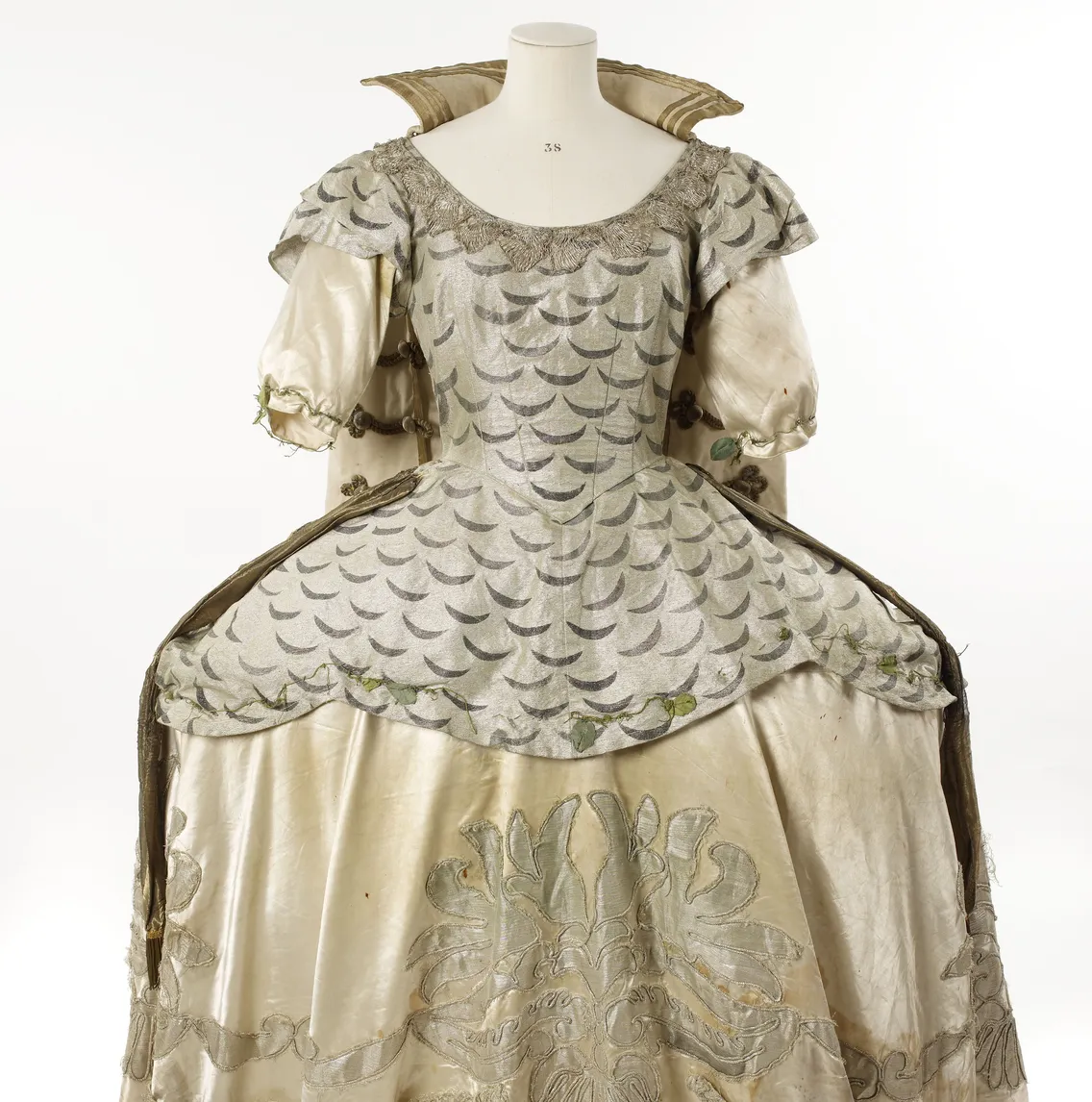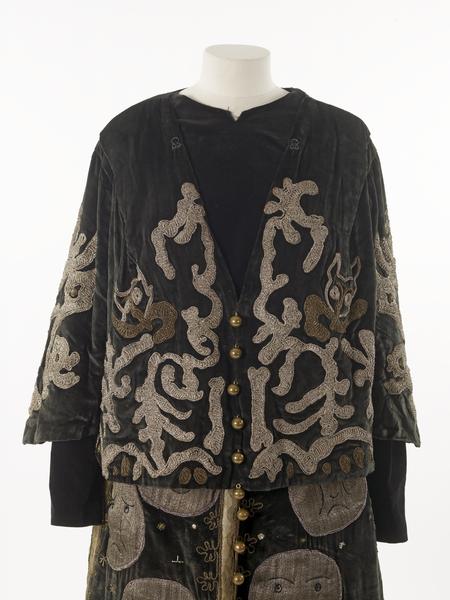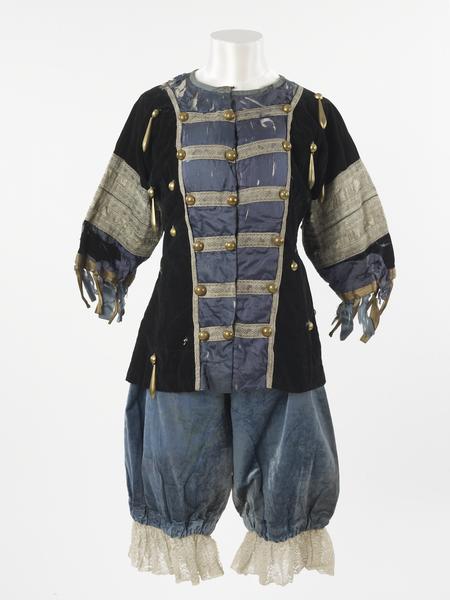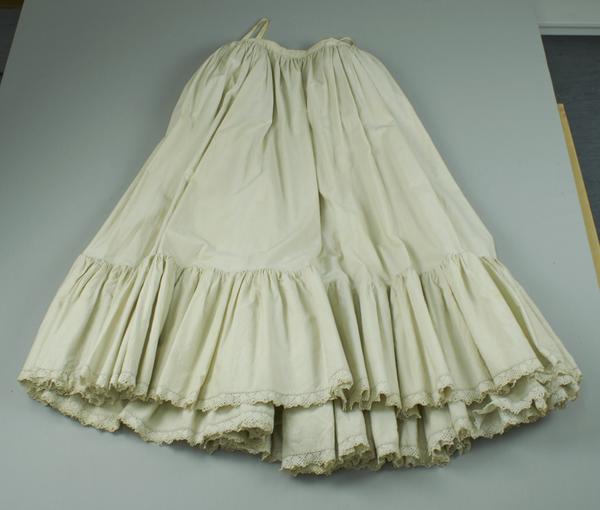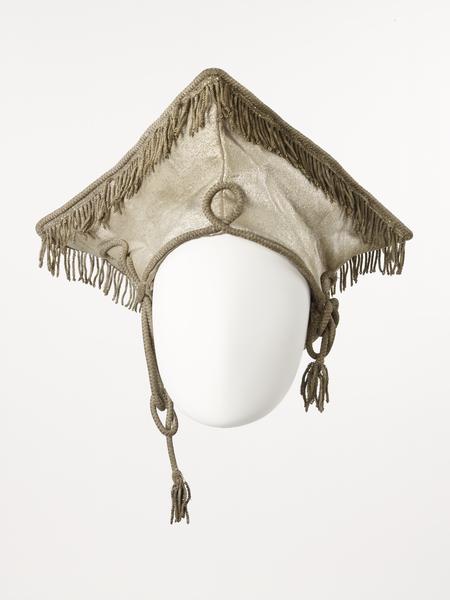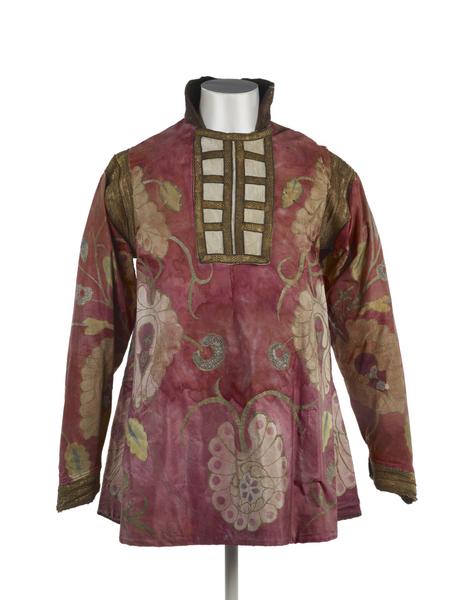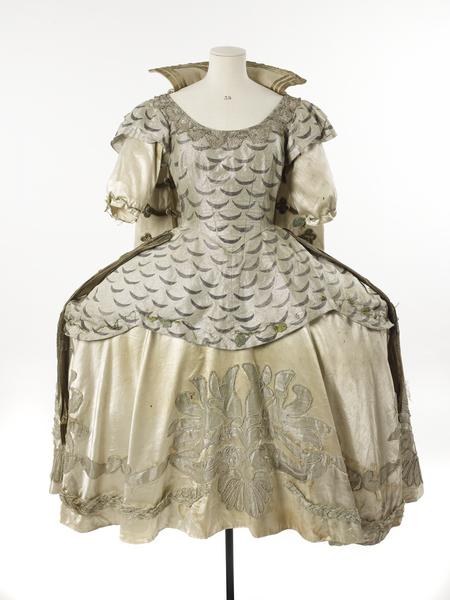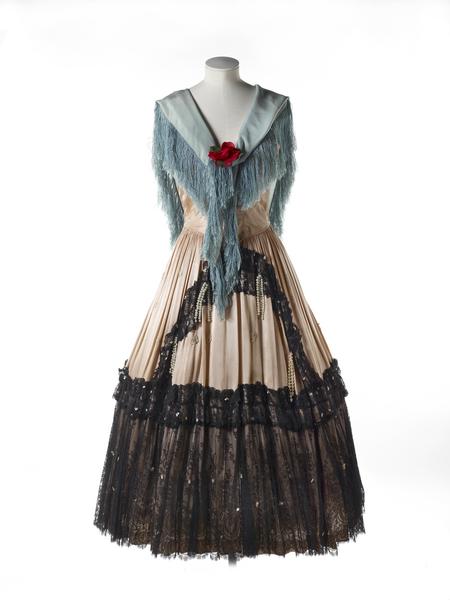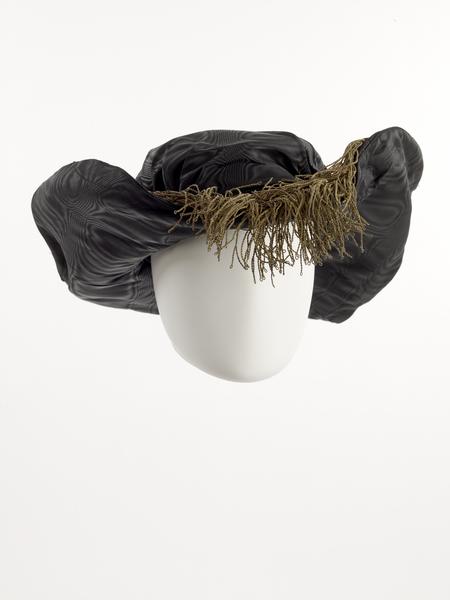Ballets Russes costumes
The Ballets Russes brought a vivid escapism to costume design and collaborated with many forward-thinking artists across Europe.
1909–1929
A bold new ballet look
Think of ballet costumes and plain tights or tutus might be in your mind’s eye. But in the early 20th century, Russian impresario Sergei Diaghilev’s Ballets Russes tore up this visual rulebook.
The dance company presented a radical look that emphasised colour and drama. To create these bold sets and costumes, it collaborated with leading artists and designers from across Europe. Léon Bakst, Pablo Picasso, Natalia Sergeevna Goncharova, Coco Chanel and Henri Matisse contributed to this modern ballet aesthetic.
We have a number of costumes worn in Ballets Russes productions in our collection – including a Picasso dress.
'The Firebird' tunic
This hand-painted tunic was designed by Léon Bakst for the male lead of The Firebird (or, L’Oiseau de Feu). The ballet is based on a Russian fairytale and has a critically acclaimed score by composer Igor Stravinsky.
This costume was designed in 1913 and worn by the influential dancer and choreographer Michel Fokine.
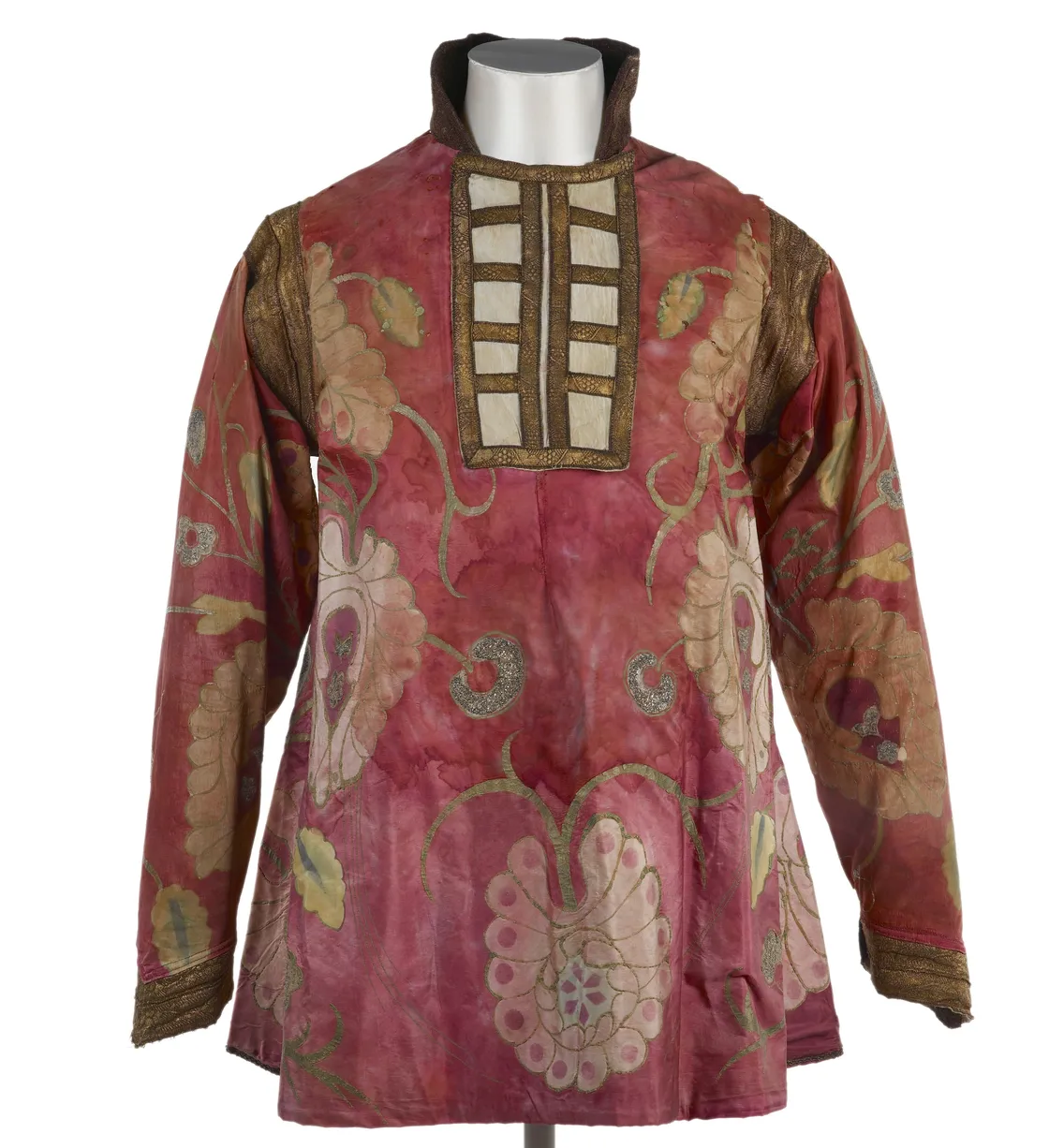
Hand-painted tunic for The Firebird.
A Pablo Picasso dress
This dress for the role of The Miller’s Wife is one of two known surviving costumes from Le Tricorne. Artist Pablo Picasso designed the set and costumes. It was possibly made in the late 1920s but definitely worn in the 1930s revival by the Ballets Russes de Monte Carlo.

This dress was worn by Russian dancer Lubov Tchernicheva.
Costumes for Carabosse and his pages in 'The Sleeping Princess'
The Sleeping Princess was a hugely ambitious ballet that launched at London's Alhambra Theatre in 1921. Léon Bakst designed lavish costumes and sets. They were then constructed by costume maker Marie Muelle in workshops in Paris and London.
This costume for Carabosse, the wicked fairy, features an embroidered velvet bodice and is shaped to fit over a hunchback. It was paired with an orange velvet cloak.
This velvet tunic was worn by one of Carabosse’s two pages. Like Carabosse’s costume, this has also been padded to distort the dancer’s figure. And it features a similar nighttime colour scheme of blue, black and silver. It would have been worn with a pointed headdress, mask and fake hands.
The Countess from 'The Sleeping Princess'
In this scene, the Countess is the lead female character who is competing for Prince Charming’s attention. The costume features a heavy cotton petticoat, skirts, a hat, a bodice and gloves. It was worn by Lubov Tchernicheva, who danced with the Ballet Russes from 1911 until it folded in 1929.
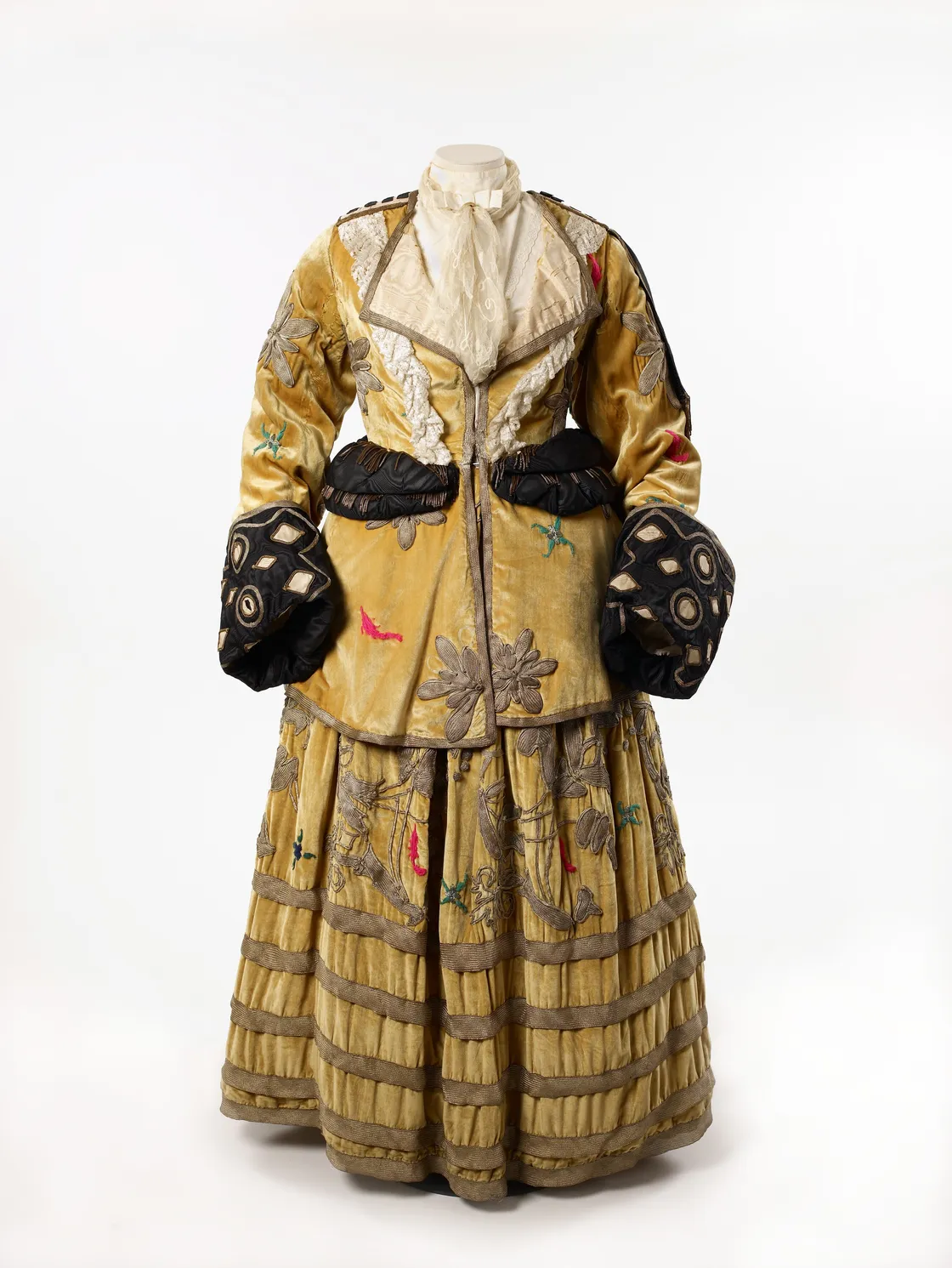
The Countess was one of the costumes made by Grace Lovat Fraser in London, who was given only three weeks to make them before the ballet opened.
Marzuka men and women
The 12 mazurka men danced in couples with the mazurka women. This roughly made costume was possibly produced by Grace Lovat Fraser, who was asked to make many costumes three weeks before opening. The ballet ran for 105 performances before sales dropped and it closed, plunging the Ballet Russes into debt.




